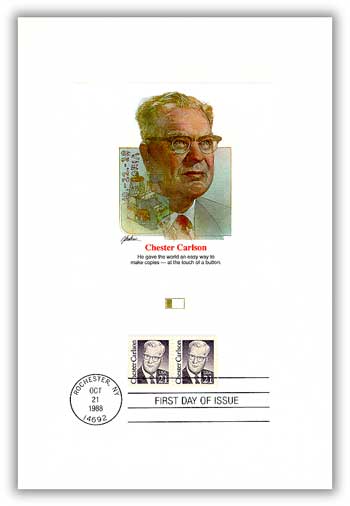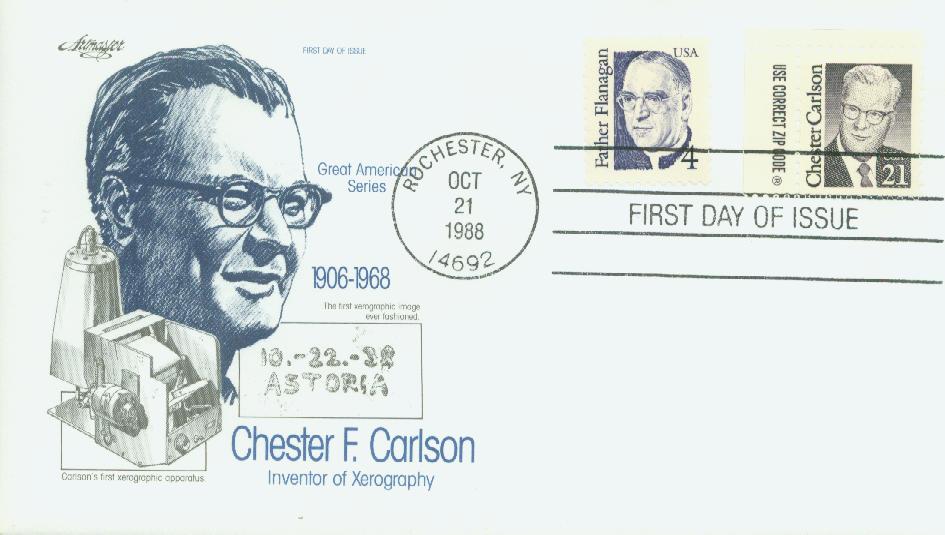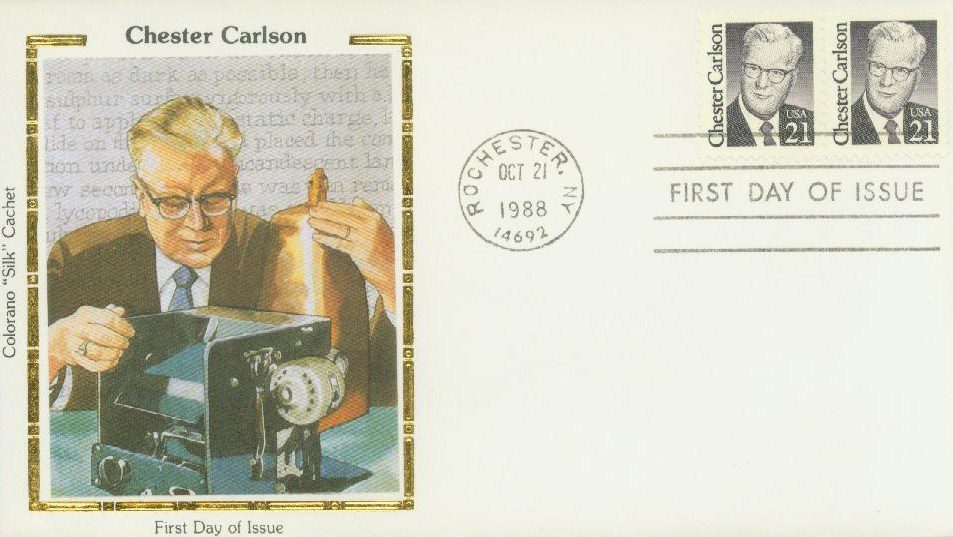Chester Floyd Carlson was born on February 8, 1906, in Seattle, Washington.
By the time Carlson was eight years old, both of his parents were sick, which left him responsible with working to support the family. In his teens, he would work two or three hours before school, and then several more hours after classes finished for the day.
Carlson became interested in duplication at an early age. When he was 10, he developed his own newspaper that he gave to his friends. When he was in high school, he attempted to create a science magazine for his fellow students. However, he grew frustrated with the duplicating techniques used at the time and set out to find a better way.
Working his way through college, Carlson earned a degree in physics from the California Institute of Technology in 1930. For a while he tried finding a job in physics, but when nothing panned out, he moved to New York City. Carlson got a job there in the patent department of the P.R. Mallory Company. His work there introduced him to patent law. He also had to duplicate patent drawings and specifications. At the time they used the photostat process, which required special chemicals and paper and was similar to taking a photograph.
During his time at Mallory, Carlson took law classes at night and was admitted to the bar in 1940. He was eventually made head of the patent department. During this time, he began researching how to make quick, clean copies of a document without using chemicals, film, or special paper. He read about all the existing technology of the day and decided that the wet process used by other duplication methods should be replaced with a dry technique he called electrophotography.
Carlson soon turned his apartment into a laboratory. He spent the little money he had on chemicals and equipment, and hired an assistant to help him since he still had a full-time job. In 1938, they made their first electrophotographic copy. To do so, they rubbed a cotton cloth over a metal plate coated with sulfur. The rubbing action charged the plate with static electricity. The plate was set under a piece of glass, which had the document they wanted to duplicate on top. They then shined a bright light, which caused the sulfur coating to lose its charge in different amounts based on the amount of light that hit it. This created an electrostatic image that was made visible by dusting the plate with an electrostatic powder. The powder was drawn to the areas that had been exposed to less light. Carlson named his new process xerography and submitted patents for it in 1939 and 1940.
Carlson didn’t have the money or laboratory to convert his experimental process into a machine for public use. So, in 1944, he worked out an agreement with the Battelle Memorial Institute to finish the work of developing the machine. The Haloid Company of Rochester, New York finished the work and put on the first public demonstration of a Xerox machine in 1948. The company later became Xerox, and Carlson worked as a consultant for them.
Carlson earned significant royalties from his patents and was able to retire from Mallory in 1945 a multi-millionaire. By 1968 he was ranked as one of the wealthiest people in America by Forbes magazine. But Carlson once told his wife he wanted “to die a poor man” and gave away over $150 million to the NAACP, New York Civil Liberties Union, University of Virginia, and more. Carlson suffered from two heart attacks in 1968 and died on September 19 that year.
The day Carlson invented the Xerox, October 22, was designated as National Chester F. Carlson Recognition Day in 1988. There are also two buildings in Rochester, a street in New York, and three awards named after Carlson.
| FREE printable This Day in History album pages Download a PDF of today’s article. Get a binder or other supplies to create your This Day in History album. |
Click here to see what else happened on This Day in History.







I very much enjoy your emails containing very interesting pieces of history and stories behind the stamps.
Certainly a great addition to my interest in stamps. Please continue the great work.
Many Thanks
Dave Carter
I concur with Mr. Carter. Stamps mean more with history behind them.
Thanks Chester Xerox.
Thank you. Great job presenting U.S.history and the stamps that commemorate the stories. Much appreciated. Every day.